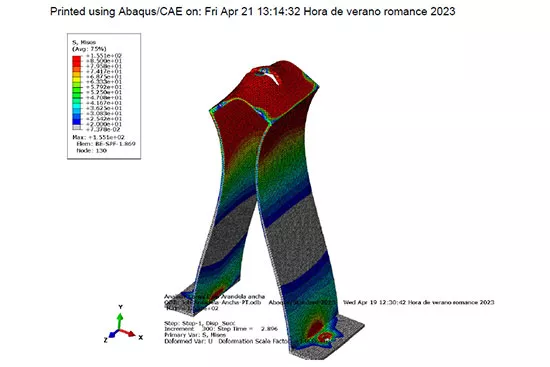Finite Element Analysis
Need a Finite Element Method Analysis?
FEM Analysis is a computational technique used in engineering and applied sciences to analyze the behavior and performance of structures, components, and systems under different conditions and loads. Through this technique, the model is divided into small finite elements, allowing for detailed analysis of each part and its interaction with the rest of the system, generating precise results that guide the design process and decision-making.

FEM Analysis process
Model creation
Application of loads
Solution of equations
Analysis and results
Importance of Finite Element Analysis
- Efficient Design: Finite Element Analysis allows for the exploration of multiple configurations and materials in the early stages of design, reducing the need for physical prototypes and shortening development times.
- Resource Optimization: By simulating different scenarios, areas of high tension or stress can be identified, helping to use materials more efficiently and reduce costs.
- Safety and Reliability: Finite Element simulation enables the evaluation of the strength and behavior of structures under extreme loads, ensuring the safety of projects and avoiding potential failures in reality.
- Detailed Analysis: Finite Element Analysis provides precise information about stress distribution, deformations, vibrations, and other parameters, allowing for adjustments and improvements in design.
- Technological Innovation: The ability to predict the behavior of complex systems drives innovation and the development of new products and technologies.
Contact us
Basic information on data protection
Responsible: Cero Metros Cuadrados, S.L.
Purposes: Manage the sending of information that you request. Sending commercial communications.
Legitimation: Consent. You can withdraw consent at any time.
Recipients: Your data will not be transferred to third parties except in case of legal obligation.
Data subject's rights: To access, oppose, rectify and have their data deleted, as well as other rights as explained in the additional information.
You can access additional and extended information at this link.

